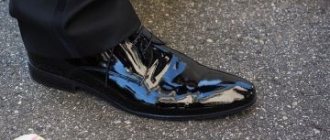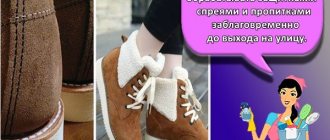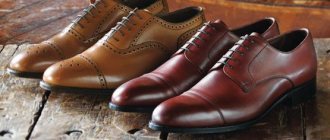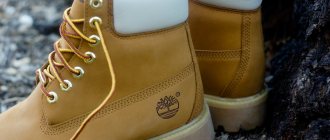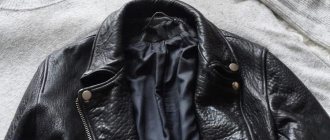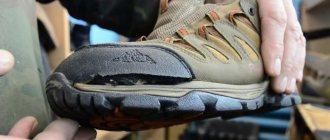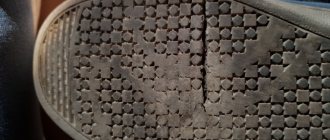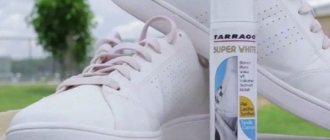Even if you wear your favorite leather shoes, shoes or boots carefully, they can suffer due to the poor condition of sidewalks, roads, clumsy fellow travelers on public transport or your own carelessness. Also, the appearance of cracks depends on the original quality of the material and proper storage. There are several tips on how to remove scratches on shoes to save nerves, money and time looking for a new pair.
Causes of scratches
There are a huge number of reasons for damage, and it is quite difficult to protect yourself from them. Thus, you can “injure” the skin or its artificial analogue when traveling on public transport, walking in the park, tripping over a curb or stone, doing gardening or other work.
Scratches on shoes not only spoil their appearance, but also accelerate physical wear and tear. This happens for the simple reason that moisture gets into cracks that are not protected by the surface layer, which is detrimental to any materials. Dirt also accumulates there, causing damage to neighboring areas. Preventing aging, restoring the original appearance and hiding scratches on shoes is quite possible, and there are many ways to do this.
Removing scratches from leather shoes
Expensive leather shoes require careful handling, and therefore a caring owner regularly takes care of the surface, applying creams, aerosols and waxes to protect the surface, give shine and a neat appearance. Even a thin layer of decorative cream or protective wax can prevent minor damage caused by abrasive substances that are present even indoors. But these measures cannot prevent the appearance of distinct scratches caused by brute mechanical force.
How can you remove scratches from leather shoes? There are “folk life hacks” with which you can level out minor defects, and there are also quite professional means. The owner chooses which method to use, but first it is worth examining the damaged area and making a conclusion about the depth of the defect: only the paint is damaged or deeper layers are affected.
- A marker that matches the color will temporarily help get rid of noticeable damage. The product is good until the first cleaning. Therefore, you need to put a protective layer of varnish, glue, and wax on top.
- Shoe cream. A good product for eliminating minor defects that only affected a layer of paint. But, like the marker, the cream is very short-lived and therefore requires regular updating.
- Collodion. It is a chemical substance consisting of a solution of cellulose in ether. Like varnish, it dries quickly and forms a protective cover for the area with compromised integrity.
- Wax. Regular beeswax works well to restore the integrity of the skin even with deep damage. Before use, the substance should be heated and a coloring agent selected to match the color of the skin should be added.
- Leather glue. A professional product that can restore damaged areas of material.
- Liquid skin. A type of adhesive composition that is quickly absorbed into the base, creating protection for the treated area. Helps to paint over scratches and restore the uniformity of the surface layer. After application, the liquid product is leveled and dried for half an hour. During this period, if something goes wrong, the liquid skin can be washed off with plain water. Cream or wax must be applied over the dried glue. In case of a deep cut, applying several layers is acceptable.
As you can see, each case has its own means and possibilities. Some of them are less durable, others are more durable, but they all cope with the task very successfully.
Painting over scratches on patent leather shoes
No matter how high the quality of the varnish layer, it is subject to mechanical wear and cracking. You can remove damage to patent leather shoes: the main thing is to carry out the manipulations as carefully as possible. Before using one method or another, you should thoroughly clean the surface with soapy water and a soft swab. After such a wet “disinfecting” prophylaxis, the stain must be dried. Next we proceed using the following means:
- Nail polish. Colorless or in a tone that matches the skin tone, apply a thin layer and restore the area of paint and varnish;
- A nail polish remover that, once applied, can dissolve nearby areas of remaining nail polish and heal the tear. The product is effective for minor scratches;
- Eraser. Using a light colored eraser, you can smooth out the torn edges, then wipe the area with alcohol. Take a soft cloth moistened with mineral or vegetable oil, wipe the area and polish with a dry cloth;
- Superglue, which is applied in a thin layer to the damage, gluing areas of leather and varnish;
- Polish for patent leather, which is guaranteed to restore the original look.
All means are quite applicable and mask marks on patent leather shoes well, but they only work for a while, so the operation will have to be repeated periodically.
Preparatory stage
Before you get rid of scratches, you need to prepare your shoes for the process. To do this, thoroughly clean your boots or shoes from dirt and dust. To do this, dampen a cloth in a light, warm soapy solution and wipe the surface. Then go over the material with a damp cloth to remove any remaining soap.
Finally, wipe the products with a dry cloth and leave to dry in a ventilated place away from sunlight, batteries and electrical appliances. To make the inside of your shoes dry faster, you can fill your shoes or boots with newspaper and replace the paper with dry paper as it gets wet.
Inspect dry and clean shoes. Carefully trim any protruding pieces of skin that do not fit back with nail clippers or scissors. After these steps, you can begin the process of eliminating defects.
Getting rid of scratches on suede and nubuck shoes
Nubuck and suede are the most capricious materials to wear. Shoes made of soft and fuzzy leather are subject to much faster abrasion and scratches. To prevent such defects, the surface is treated with special aerosols that create a protective cover. However, it does not always have sufficient protective ability, and then the question arises: how to remove scratches from shoes made of nubuck or suede?
- Nowadays, among care products you can easily find special rubber brushes with coarse and finer textures, which do an excellent job of leveling the fleecy surface. When marks appear on suede shoes, it is often enough to go first with a coarse brush and then with a fine one to comb out the lint. If you don’t have such a device at hand, you can get by with an ordinary office eraser or fine sandpaper.
- The positive effect of steam on suede is well known: under moderate influence of moisture and temperature, the pile rises and covers the damaged area. After drying the steam-treated stain, simply brush over it to lift and straighten the fibers.
- This method is based on the use of professional products - special paint for suede and nubuck. As a rule, this product is used when the mark is quite deep and raising the pile is not enough: it is necessary to apply a layer of paint. After drying it, it is necessary to apply a protective layer.
Suede and nubuck shoes are not meant to be worn every day, so there are not many reasons for marks to appear.
Removing Scuffs
Olive oil can cope with simpler damage. If there are many abrasions and they are significant, it is necessary to treat the shoes in these areas with a mild abrasive. Then the surface is degreased. When the skin is dry, apply the prepared mixture of wax and paint. This method allows you to hide abrasions of varying depths.
If necessary, the wax and paint mixture is applied several times. Each layer must be polished first with a brush, then with a rag. This method will preserve the attractiveness of your shoes for a long time. However, with prolonged use, it may be necessary to repeat the procedure to restore the surface of the skin.
Masking scratches on artificial leather and leatherette
Faux leather shoes occupy the largest segment of the market due to their affordability. Manufacturers make a lot of effort to ensure that the material resembles genuine leather as much as possible. Thanks to the low price and realistic imitation of expensive material, users are increasingly giving preference to just such shoes, choosing them as everyday ones. Operating conditions are rarely gentle, and therefore the question of how to repair scratches on leatherette is one of the most pressing.
Experts recommend using the same products that are recommended for natural leather, as well as decoupage glue or the well-known PVA. Decoupage glue is more preferable because it contains substances that have adhesive and sealing properties. In addition, after its application, a film similar to varnish is formed.
How to cover up scratches that are quite deep and affect not only the surface, but also the inner layer of artificial leather? To do this, you must first apply the paint, and after it has absorbed and dried, treat it with an adhesive. This method is good for masking deep damage.
How to remove cracks on the soles of sneakers?
It is not easy to restore the sole if cracks appear on it. However, it is still possible to do this at home. The simplest option is to use Moment glue or epoxy resin, which is sold for gluing car parts. To do this, you need to bend the sole in half so that the ends of the crack become visible.
How to remove cracks on the soles of sneakers:
- It is necessary to scrape off dirt, debris, and remove contaminated areas using a shoe knife. After this, sandpaper is applied and the surface is degreased. Next, a thick layer of glue is applied, the edges are connected to each other.
- Such shoes must be placed under a press or a heavy object for a day. Using a knife, you need to mark zigzag lines that will connect the two parts of the sole. Using a shoe hook and thread, you need to connect the edges of the sole. This way you get double protection: gluing with epoxy resin and seam.
- You can restore the sole using nylon and a soldering iron. It is necessary to degrease the surface, remove debris, and then wipe the cracks with sandpaper. After this, you need to heat up the soldering iron and melt the material along the crack line on both sides. Next, a piece of nylon is inserted, which is melted using a soldering iron. The molten mass must be pressed into the resulting space using the handle of a soldering iron, not the spout. The spout is hot, so dents will form.
Repair
Read on topic:
- Shoes squeak when walking: what to do?
- How to clean boots from white stains: tips
- How to stretch and break in shoes: tips
- How and with what to remove fuel oil from the surface of sneakers, shoes, and boots?
- Slippery soles of boots: what to do?
Experts recommend purchasing not one pair of shoes for the season, but two or three, in order to alternate them with each other. It is recommended to store winter shoes not in plastic bags, but in cardboard boxes, stuffing them with fabric or paper. This helps smooth out folds and prevents creases from appearing. Before storing a winter pair, you must thoroughly clean it with a thick layer of paper or cloth, and apply a large amount of a high-fat care product on top. After a few months of storage in the closet, such shoes are completely smoothed out and ready for subsequent wear. The best option for storing shoes is cardboard boxes with ventilation.
We restore light-colored shoes and white sneakers
Fashionistas will confirm that the most popular colors in the spring-summer period are pastel shades, beige, gray and white. The light surface is very susceptible to dirt, and elegant sneakers or delicate pumps quickly lose their appearance. Fresh asphalt, the use of mats, seals and other rubberized surfaces in transport cause black scratches to appear on white shoes, which can be difficult to get rid of.
There are several options for getting rid of these types of marks. For patent leather shoes, you can try using gasoline if a simple school eraser does not help. Marks on light-colored shoes made of genuine leather are removed with a swab dipped in milk. A special liquid cleaner or a melamine sponge is suitable for cleaning sneakers. You can also wash a pair of sneakers in the washing machine without even removing the laces. For a cloth pair, you can use the old fashioned method - tooth powder with a drop of lemon juice. After the mixture is evenly distributed, the shoes can be exposed to the sun to better whiten the dark marks.
It should be remembered that only those defects that are located on hard areas - socks, backs, tops - are subject to restoration. In areas of natural folds, cracks and scratches cannot be eliminated, but with regular preventative care, their appearance can be delayed.
